How To Put A Centerpin Reel On The Right Way
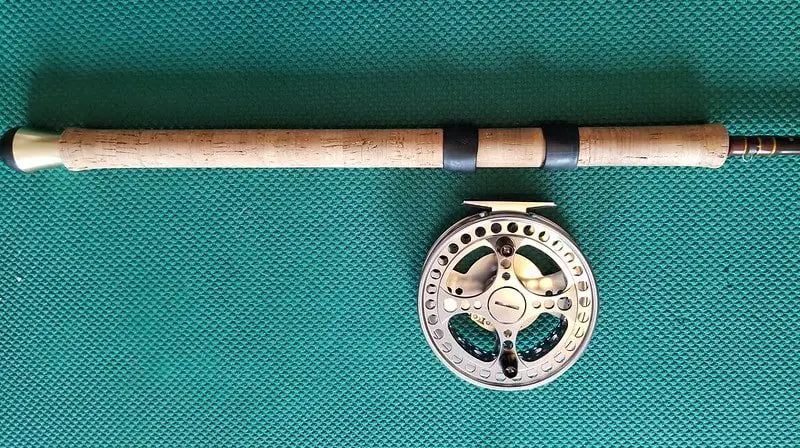
This is something new anglers ask me about. I have even seen advanced Centerpin anglers who don’t know how to put a centerpin reel on properly or securely when using Centerpin rods with sliding rings.
If you have a centerppin reel and a rod that has sliding rings, there is a right way and a wrong way to put a Centerpin reel on. If you get it wrong, it can affect everything from casting, presentation, setting the hook, and even fishing the fish.
The worst-case scenario is the reel might fall off, which has happened to me and is something I’ve seen happen a few times when guys are fishing and fighting a fish. Not only can dropping your reel severely damage your reel, but you could lose it completely in deeper water.
To put the Centerpin reel on properly you will need to place it near the top of the handle of the rod. Once it’s in the right spot you will need to secure it with one or two wraps of electrical tape to be sure the sliding rings do not move.
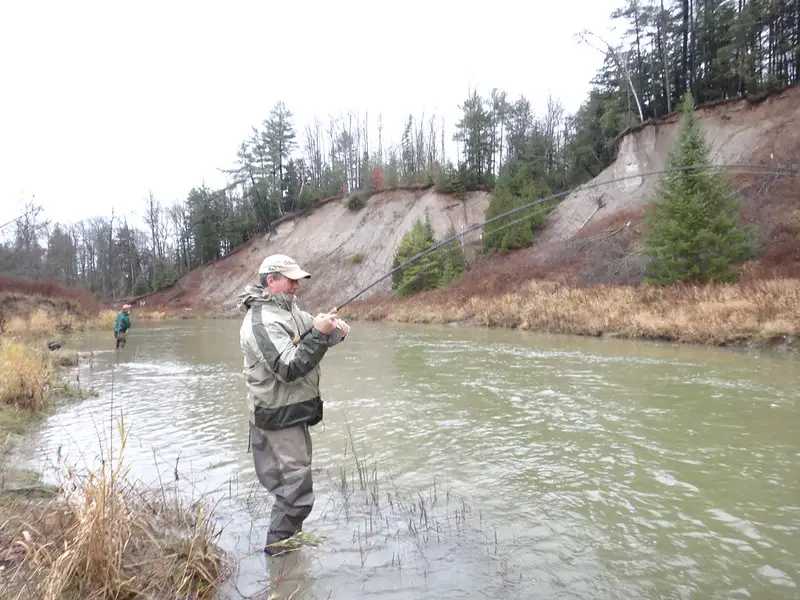
There are technical reasons why it’s done this way, so avoid issues and bad advice and see why it’s better to do it this way below.
Where Is The Best Spot To Put A Centerpin Reel On?
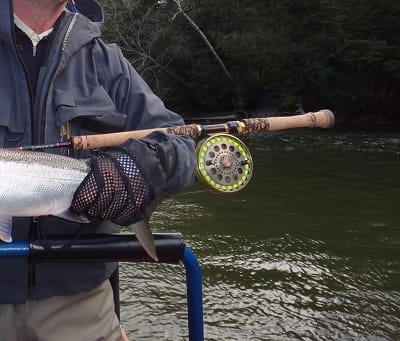
Some anglers prefer the reel at the top of the rod handle, which I prefer, and some anglers prefer the reel closer to the butt section, which is the worst spot, and some have no idea, so they just put it in the middle. I will explain why the top of the handle is best.
Rods with built-in reel seats often put the reel seat in the middle of the rod to accommodate the most anglers.
The middle of the handle is not the best spot for your reel!! But if you buy a rod with a fixed reel seat, often, you don’t have a choice of where to place your reel.
Keep in mind that this is my personal opinion, and others will disagree, but my opinion is based on physics, and from experience teaching and guiding thousands of anglers how to Centerpin fish.
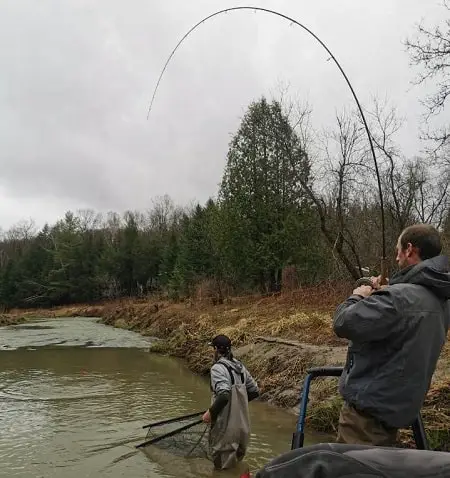
I like to put the reel as far up on the handle and as close to the rod blank as possible so that I have more butt section, which I use as leverage for fighting the fish. It’s also better for hook sets and provides less wrist fatigue.
Putting the Centerpin reel near the top of the rod handle also balances the rod out the best.
If the reel is too close to the butt end of the rod, it puts a lot more stress on the wrist, and the set-up will be tip-heavy. This makes fishing all day more difficult.
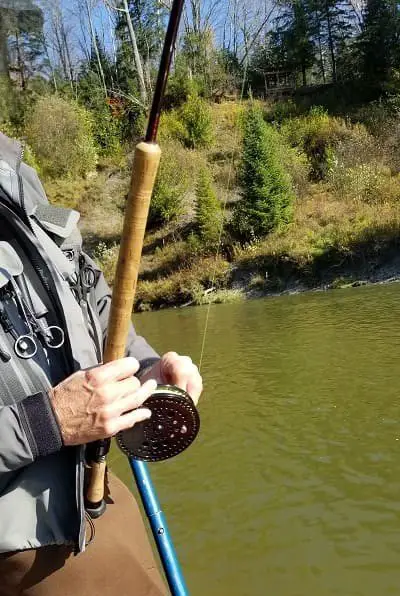
If you want to see what I mean, hold your rod as close to the bottom butt section of your rod. See how much strain there is on your wrist. Now imagine holding it there all day.
Now move your hand up 3 feet onto the blank and see how much strain there is. The higher your hand to the balance point (the spot where you can balance your rod horizontally with one finger) of your rod, the less strain on your wrist.
Now think about setting the hook with your hand down at the very bottom, compared to further up.
You have very little leverage when fighting a fish if the Centerpin reel is too low on the reel handle yet I even see some advanced anglers doing this.
Anglers will compensate when fighting big fish by holding one hand high on the rod blank for leverage and the other hand on the reel. But that only works until they need to reel in some line, and then you see their hand going up the rod and down over and over again, which is not ideal.
Some will even press the butt section into their belly for leverage which is great until the spool of the reel or their handle catches on their vest and the fish breaks them off. I’ve seen this too many times.
Putting the reel high on the handle allows me to fish all day and fight fish with the butt section under my forearm or armpit, which takes a ton of strain off my wrist.
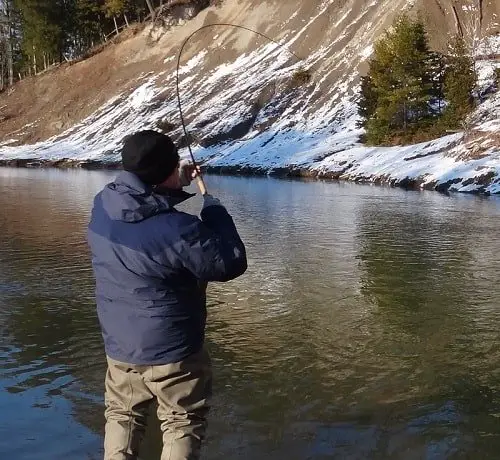
Having the handle under the armpit or forearm is so effective that it will even allow me to hold the entire reel and rod balanced on one finger. No strain!
It also gives me plenty of leverage when fighting big fish without the need to hold the rod blank with one hand.
How To Put A Centerpin Reel On
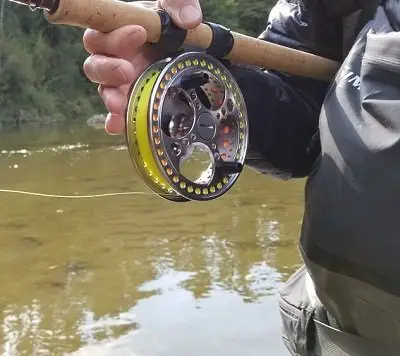
I put all my reels at the spot on the rod that if I hold onto the reel and put my index finger straight out the tip of my finger is about half an inch from the rod blank.
Find that spot on your rod handle and gently tighten the sliding rings, but don’t tighten them yet.
How To Secure A Centerpin Reel To The Rod?
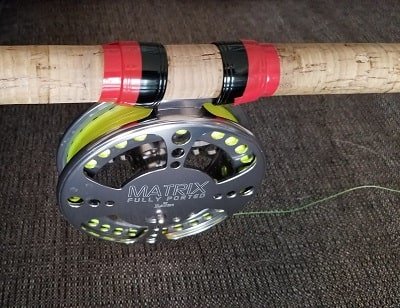
Once you get the reel in the right spot, line the reel up with the guides, then pull the rings as tight to the reel seat as possible on both sides, and then add a wrap or two of electrical tape.
Make sure the reel is perfectly lined up with the guides before you tape it on.
See the picture with the red electrical tape on the reel.
The reason for the tape is to prevent the sliding rings from loosening while fishing and then having your reel drop onto the rocks or into the river. I have seen this happen a bunch of times to guys while they are fishing and fighting a fish. I always carry a roll of electrical tape with me on guide trips.
Guide Tip – Never dent the outer rim of the spool, also known as the fighting rim, which is your drag when fighting a fish. If you do, you will feel the dent hit your hands over and over again while fighting the fish. I know this from experience, and it sucks!
Now that you have the reel on the rod and in a good spot, you will need a good fishing line that works well with float fishing. Read my page, Best Centerpin Line: What The Guides Use.
Once you are all rigged up and ready to go, you will need to run the lineup and through the guides, add a float, and a good leader. You can see the leader setups that I use on my page Steelhead Leaders: Best Float Leader And 2 Proven Setups.
Now you have your Centerpin reel setup and are all rigged and ready to go you will need to know how to fish with a Centerpin reel so go to my page Float Fishing: Tips From A Pro River Guide For More Trout, where I share my four fundamentals for good Centerpin fishing that will help you catch ten times more fish.
Now you know how to put your Centerpin reel on. If I missed anything or you have a question or suggestion, let me know in the comments below.
Tight Lines,
Graham

Amazing article, thank you. With regards to the balance. If I am finding proper balance with my finger past the cork just by the hook keeper, this would mean its more tip heavy. My reel is closer to where I like it where I have more butt section to use under arm. But I can feel that my wrist will tire this way. I will try and move it down a couple inches to see, if that balances out. Ideally one should have little to no wrist fatigue correct if properly balanced?
Hi Ray, Most Centerpin rods will be tip-heavy, that’s the downside to a long rod. Some anglers will add weight/lead to the butt to balance it out better but this just increases overall weight. I balance the rod in my armpit or under my elbow which works for me. Keep playing around with different areas until you find something that works for you. And, yes, for some people wrist fatigue can be a problem.. Make sure you are not squeezing too hard on the handle and the reel, some of my client’s grip too hard and that causes fatigue.
Excellent site…tons of information. I do have one question that was not addressed. With no drag on the centerpin reel, how does one stow the rigged line while moving to the next hole or walking to the dock?
Hi Richard,
The centerpin reel has what is called a clicker. The clicker is almost like a drag but only has one tension which is pretty light and it clicks when pulled to alert the angler that it is spinning. There is also usually a hook-keep on the rod to lock your hook in place.
Graham
Hi Graham , a lot of great information. I have read through all your articles. I’m just starting this center pin fishing for the first time this weekend. You make it sound wonderful. I forgot to mention that I’m trying it here in Newfoundland for sea trout
I have fished some of the smaller rivers in Ontario for rainbows back in 2000 with my brother, now that was fun.well just wanted to say thanks for all the helpful information.
Cheers.
Walter.
Hey Walter,
If those Newfoundland rivers are anything like the Ontario rivers you should do well with the Centerpin. Best of luck and thanks for the kind words.
Graham
Hi Graham,
With regards to reel tape for the centerpin, can your suggest some decent brands to pickup? Thanks!
Hey Ray,
I use about 4 inches of electrical tape, just enough to go around twice, and I pull it as I wrap in on to take out all the kinks so it’s smooth. It’s never let me down.
Some guys will use hockey tape, and some guys also like to build up a bit of thickness with many wraps, but I don’t, I like it as thin as possible.
If I do remove it to take the reel of, I only remove one side so that I always know where the reel was.
Good luck, Graham.